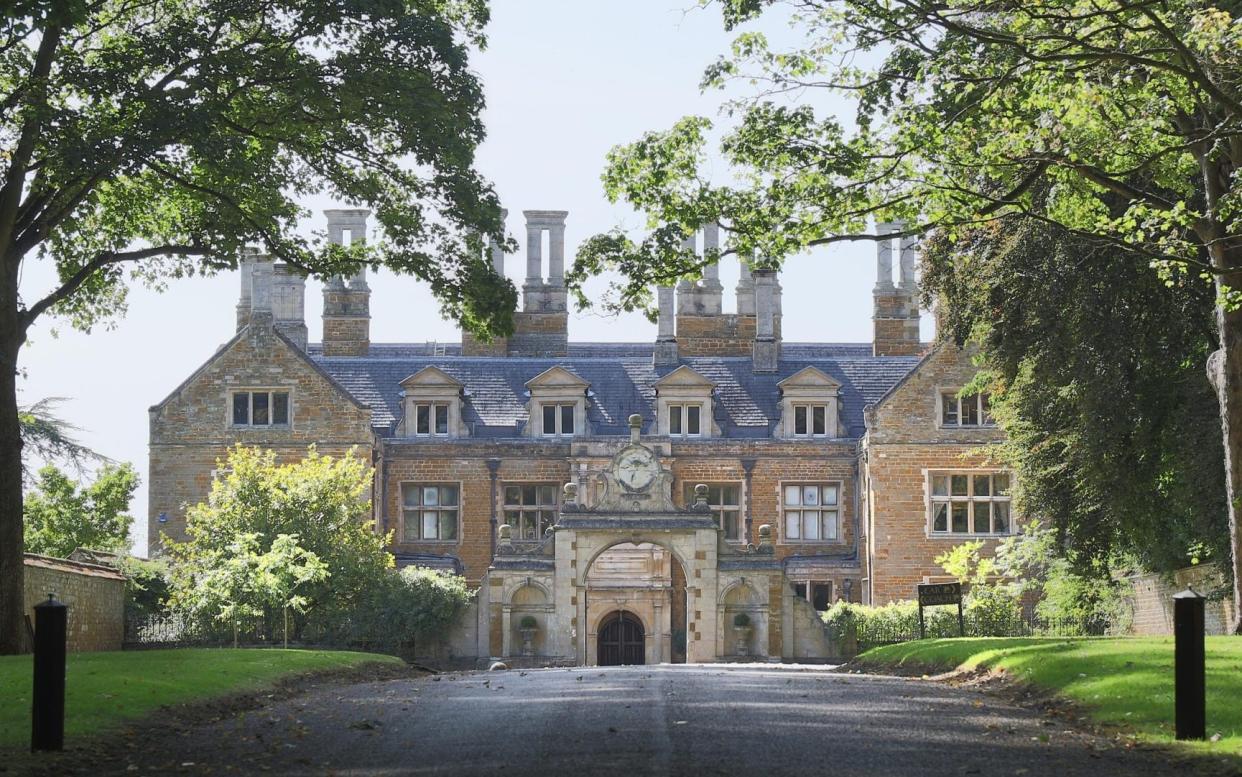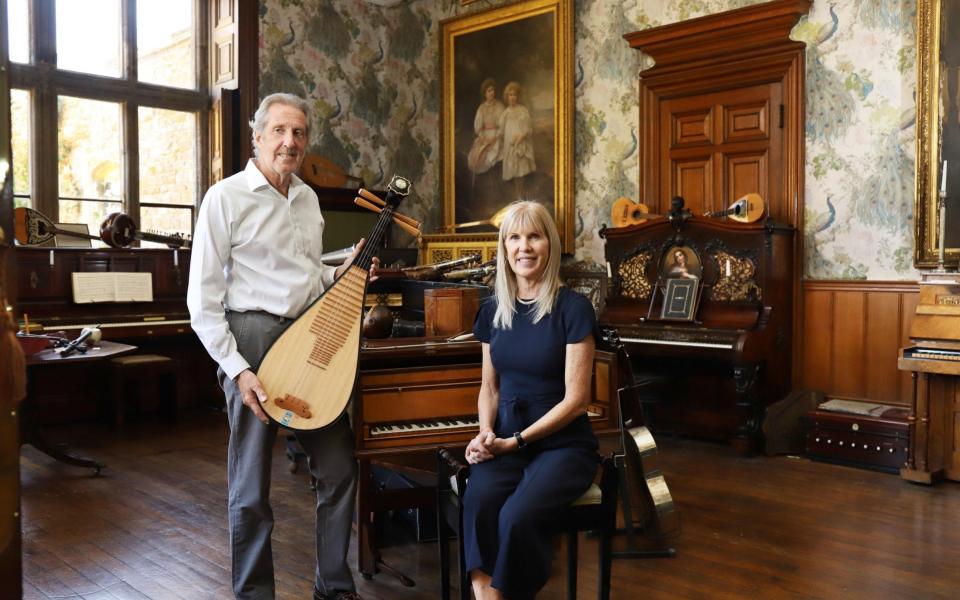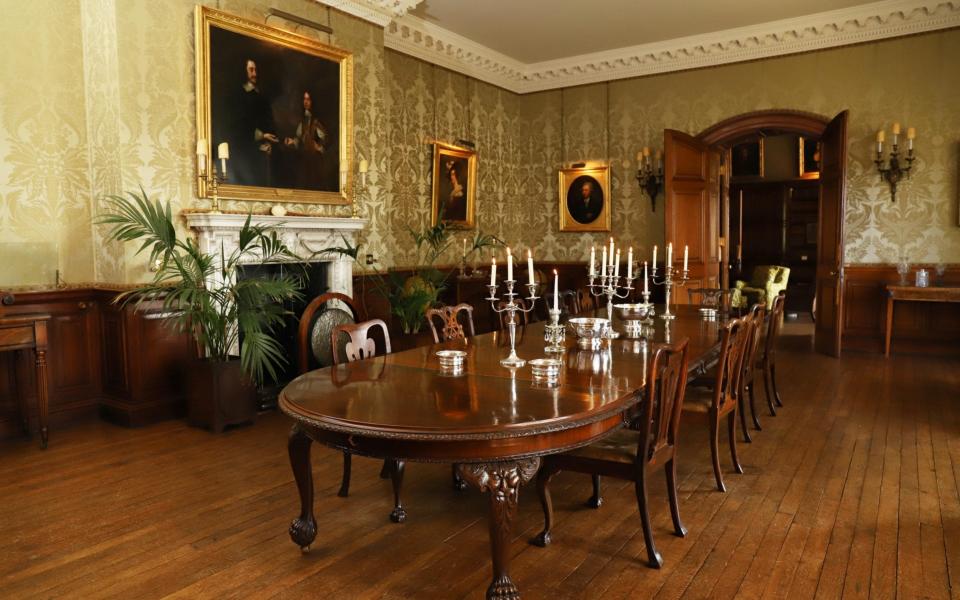A grand 'prodigy house' built to impress Queen Elizabeth I

- Oops!Something went wrong.Please try again later.
‘Somebody lives there?” My taxi driver is so astonished by the size of Holdenby House that we nearly miss the turning. Yet Holdenby, eight miles from Northampton, stands at just an eighth of its original size.
Pronounced “Holmby”, it was built by Lord Chancellor Sir Christopher Hatton in 1583 to impress Elizabeth I. Although she never visited the “prodigy house”, she would surely have been impressed.
One of the largest houses of the Tudor period, it is estimated to have been almost 80,000 sq ft in size, spread over two courtyards, with 123 windows. When Hatton died penniless in 1591, parts of his estate were sold off.
“Hatton spent a lot of money on Holdenby, but a lot of it was owed to the Crown,” explains James Lowther, 73, who is the current inhabitant. After Hatton, Holdenby was owned by James I, and then Charles I, who was held prisoner at the house in 1647. Following the Civil War, the house was sold to parliamentarian Adam Baynes, who “asset-stripped it, and knocked seven eighths of it down”, explains James.
In 1709 Holdenby was bought by John Churchill, 1st Duke of Marlborough, and by 1870 the house had descended down the female line to Henry Agar-Ellis, 3rd Viscount Clifden and his wife, who restored Holdenby. His granddaughter Lilah married Colonel John Lowther, James’s grandfather, in 1911. John and Lilah didn’t fancy life at Holdenby, and “sent my parents to live here in the early 1950s”, explains James. His father, Captain George Lowther, had served in the Life Guards before and during the Second World War, and turned to journalism and farming afterwards.

The house the Lowthers inherited in the 1950s was in a bad way. “It had been a billet during the war, and there was no heating. You could see your breath,” explains James, who moved in when he was three.
The roof needed work, and the silk on the dining room walls was held together with tape – yet the Lowthers had a butler, a chauffeur, and nannies. Still, any major repairs to the house were unaffordable: “All the money there came from the estate, and it was only enough to deal with a crisis, and our living,” adds James.
A founding partner of advertising agency M&C Saatchi, James inherited the house upon his father’s death in 1976, and in 1987 married New Yorker Karen Wallace, with whom he has four children.

They met at work. “James never told anyone in London that he had a big house in the country,” says Karen. “He invited me for the weekend with a friend, and we had no idea what to expect.” When James’s cousin asked her whether the house put her off, she didn’t know what he meant. “Now I know – if I’d known that it was going to take literally 98 per cent of my time…” she says with a laugh. “But you’re marrying the man, not the lifestyle.”
After three decades she takes Holdenby more for granted, but as an American, “the first thing that strikes you is how old everything is”. When George died, James was working in London. “I considered coming here to run the estate, but thought I’d be better earning some money,” he says. He sold some land for death duties, before converting the old stables into offices.
Since then, the Lowthers have gone from room to room renovating. Today, the house is cosy, despite its size. “It’s got a sense of monumentality about it, left over from its history as a palace,” says James. “But it’s not that big – there aren’t acres of draughty corridors.”

The Pytchley room is equestrian-themed, containing George’s Life Guards uniform, alongside hunting horns. Elsewhere, shelves creak with Hansard volumes and books of racing results, “in case you need to know what won the 2.30 at Northampton in 1773”.
The piano room contains James’s collection of foreign musical instruments, including a horn violin from Myanmar, which “defies any logic at all”, a Chinese fiddle and a conch shell trumpet. It is also home to several pianos, part of the British Musical Museum. These include a 1920s piano played by Princesses Elizabeth and Margaret, and an eccentric “vertical piano” that resembles a giant accordion.
Usually, Holdenby is open for booked tours, and weddings, and welcomes up to 8,000 schoolchildren through its doors every year. This year, their weddings were cancelled, and the Lowthers were all at Holdenby. “It was the longest we’d all spent in each other’s company for a long time,” says James. “I probably haven’t spent as much time solidly at Holdenby without going up to London since I was a child. Financially it was a disaster, but we are incredibly lucky to live in a beautiful place.”

The Lowthers trace their history back to AD 940. “By 1200 we were quite well-established,” says James, who explains that there are several branches. Sir James Lowther was made Earl of Lonsdale in 1784. Nicknamed “Wicked Jimmy”, and he “controlled nine rotten boroughs, known as ‘Jimmy’s ninepins’”. He became slightly mad in his old age. When his mistress died he put her in a glass case in his dining room – until the body started to go off.
Holdenby wasn’t the only Lowther house. Wilton Castle in Redcar was sold by James’s grandfather in 1945, and in Cumbria another James Lowther runs the ruined Lowther Castle, last lived in by the spendthrift “Yellow Earl”, Hugh Lowther, 5th Earl of Lonsdale, who employed a private orchestra and entertained the Kaiser. “An uncle was his trustee. We have letters saying ‘do you strictly need quite so many Rolls-Royces?’” adds James.
Now, Holdenby “just about” washes its face. But it has survived 437 years so far, and there’s plenty more to come. “You just have to keep thinking,” says Karen.

